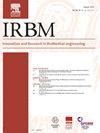基于堆叠策略的食管癌患者生存风险预测集合学习系统
IF 5.6
4区 医学
Q1 ENGINEERING, BIOMEDICAL
引用次数: 0
摘要
背景:预测食管癌患者的预后对优化治疗方案和有效分配医疗资源至关重要:预测食管癌(EC)患者的预后对于优化治疗方案和有效分配医疗资源至关重要:本研究提出了一种基于集合学习的新型食管癌生存预测模型。首先,使用递归特征消除法(RFE)从数据集中确定关键特征子集。根据确定的关键特征,提出了通过快速搜索和寻找密度峰的改进聚类(IDPC)来构建与心血管疾病生存风险相关的新型指标。IDPC 中引入了余弦距离来聚类具有相似特征的样本。然后,使用自适应合成(ADASYN)技术生成更多高风险样本,以平衡高风险和低风险样本。最后,通过鲸鱼优化算法(WOA)对极梯度提升(XGBoost)、自适应提升(AdaBoost)和随机森林(RF)等三种模型的超参数进行优化,构建了新的堆积模型来评估患者的生存风险:在郑州大学第一附属医院的数据集上,所提出的堆积模型的接收者操作特征曲线下面积(AUC)达到0.952,准确率达到0.899:结论:所提出的集合学习系统的生存预测模型更加准确和便捷,为临床判断和决策提供了依据,改善了食管癌患者的生存状况。本文章由计算机程序翻译,如有差异,请以英文原文为准。

An Ensemble Learning System Based on Stacking Strategy for Survival Risk Prediction of Patients with Esophageal Cancer
Background: Predicting the prognosis of esophageal cancer (EC) patients is crucial for optimizing the treatment plan and allocating medical resources effectively.
Methods: This study proposes a novel ensemble learning-based EC survival prediction model. Firstly, recursive feature elimination (RFE) is used to determine the key feature subsets from the dataset. Based on the determined key features, the improved clustering by fast search and find of density peaks (IDPC) is proposed to construct a novel indicator related to EC survival risk. The cosine distance is introduced in IDPC to cluster samples with similar characteristics. Then, the adaptive synthetic (ADASYN) technique is used to generate more high-risk samples to balance high-risk and low-risk samples. Finally, the hyperparameters of the three models, including extreme gradient boosting (XGBoost), adaptive boosting (AdaBoost), and random forest (RF), are optimized by whale optimization algorithm (WOA) and a new stacking model is constructed to evaluate the survival risk of patients.
Results: The proposed stacking model achieved an area under the receiver operating characteristic curve (AUC) of 0.952 and Accuracy of 0.899, on the dataset from the First Affiliated Hospital of Zhengzhou University.
Conclusions: The survival prediction model the proposed ensemble learning system is much more accurate and convenient, providing a basis clinical judgment and decision making and improving the survival status of esophageal cancer patients.
求助全文
通过发布文献求助,成功后即可免费获取论文全文。
去求助
来源期刊

Irbm
ENGINEERING, BIOMEDICAL-
CiteScore
10.30
自引率
4.20%
发文量
81
审稿时长
57 days
期刊介绍:
IRBM is the journal of the AGBM (Alliance for engineering in Biology an Medicine / Alliance pour le génie biologique et médical) and the SFGBM (BioMedical Engineering French Society / Société française de génie biologique médical) and the AFIB (French Association of Biomedical Engineers / Association française des ingénieurs biomédicaux).
As a vehicle of information and knowledge in the field of biomedical technologies, IRBM is devoted to fundamental as well as clinical research. Biomedical engineering and use of new technologies are the cornerstones of IRBM, providing authors and users with the latest information. Its six issues per year propose reviews (state-of-the-art and current knowledge), original articles directed at fundamental research and articles focusing on biomedical engineering. All articles are submitted to peer reviewers acting as guarantors for IRBM''s scientific and medical content. The field covered by IRBM includes all the discipline of Biomedical engineering. Thereby, the type of papers published include those that cover the technological and methodological development in:
-Physiological and Biological Signal processing (EEG, MEG, ECG…)-
Medical Image processing-
Biomechanics-
Biomaterials-
Medical Physics-
Biophysics-
Physiological and Biological Sensors-
Information technologies in healthcare-
Disability research-
Computational physiology-
…
 求助内容:
求助内容: 应助结果提醒方式:
应助结果提醒方式:


